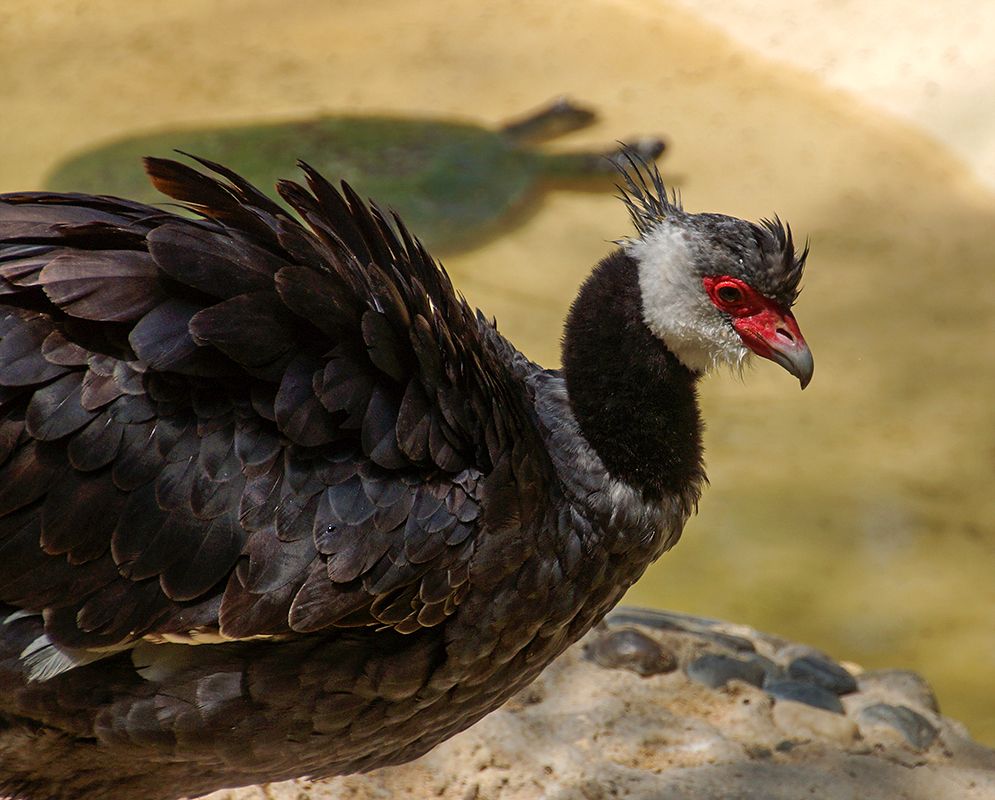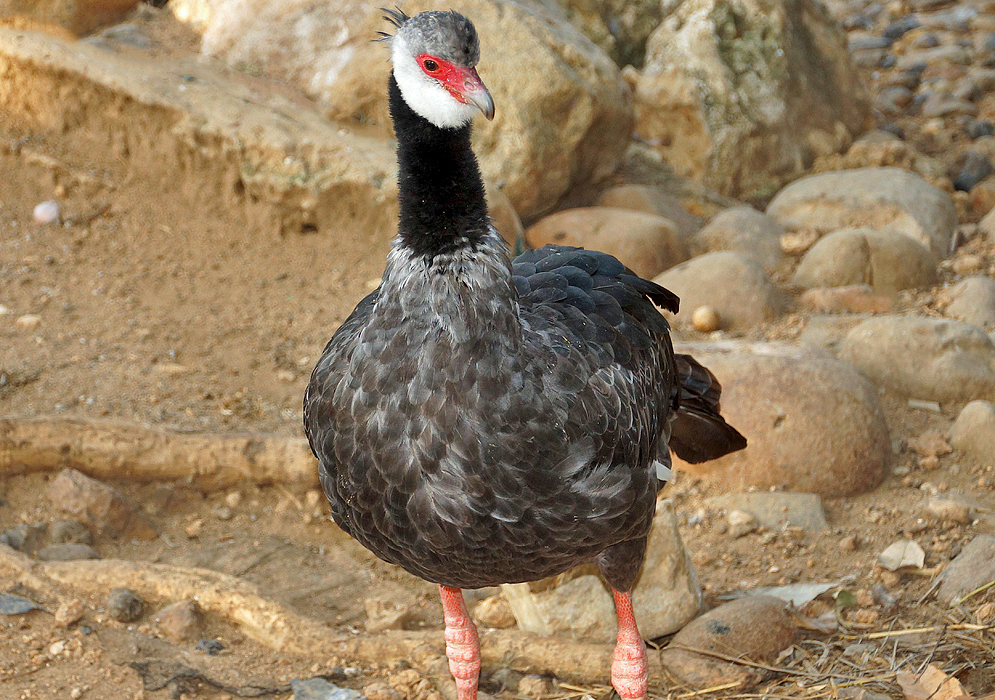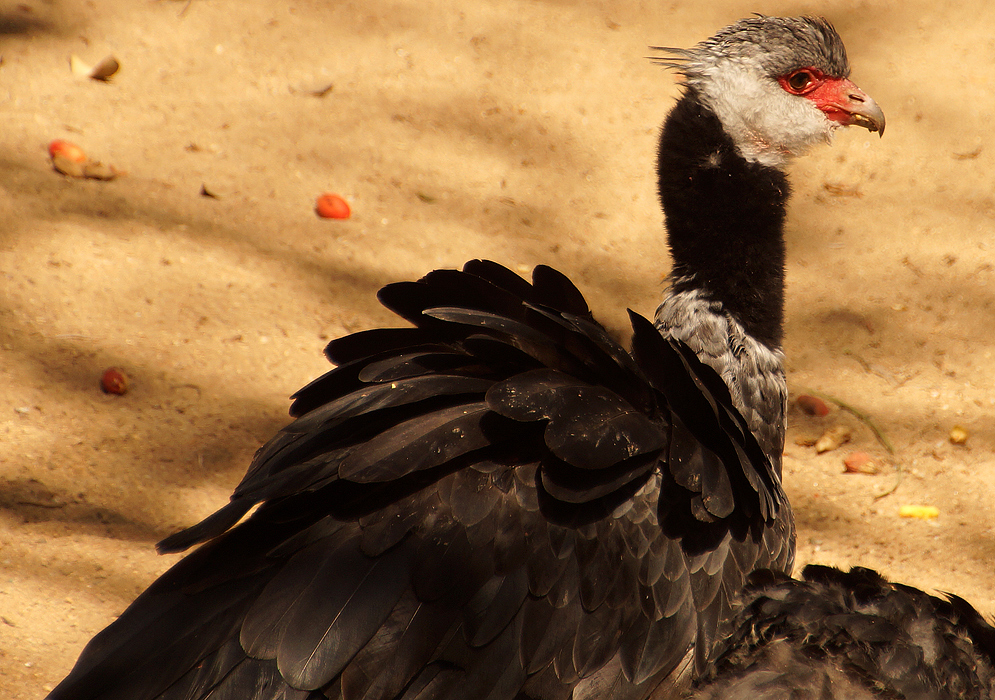This post has 11 Simple Fields-fields attached. Show fields.

The Northern Screamer is a Near Threatened bird species. It is native to northern Colombia and the Lake Maracaibo area in Venezuela. This bird is characterized by a sizeable body length of 30 to 36 inches, with a stout build, a small head, and a gray bill. Both sexes share similar plumage featuring a gray crown with a long crest, a predominantly white face, a black band around the neck, and dark gray body, wings, and tail. The wing is notable for having two sharp spurs. The species shows a distinct red skin around its brown eye and has reddish-orange legs and feet. Juveniles of this species resemble adults but have a more subdued appearance. The Northern Screamer can be found across a range of wet environments, including swamps, marshes, lagoons, riverbanks, and seasonally flooded river plains in its native regions. The species is primarily sedentary, although some local movement by non-breeders and juveniles is suspected. When it comes to feeding, these birds graze on the leaves, stems, and roots of aquatic plants, often in loose flocks, similar to geese. Northern Screamers are territorial during the breeding season. They construct a nest mound from plant material and debris. Breeding can occur any time of the year, with most egg-laying taking place in October and November. The typical clutch size ranges from three to seven eggs. Both parents participate in incubating the eggs and caring for the young, with the incubation period lasting 42 to 44 days. The fledglings become independent approximately 12 weeks after hatching. The species has an estimated population of between 1,500 and 7,000 mature individuals, and this number is believed to be decreasing. Factors contributing to its decline include habitat destruction, egg collecting, hunting for food, pollution, and urbanization. The bird is found in several protected areas in Colombia, but these areas have also been impacted by habitat destruction.





